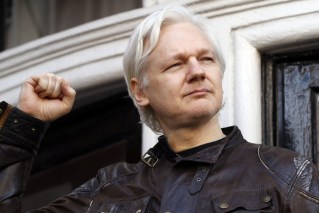Coalition names seven nuclear sites across Australia

Source: ABC TV
The Coalition has named the seven sites across Australia where it would build nuclear reactors if it wins government.
They are Loy Yang in Victoria’s Gippsland, Callide and Tarong in Queensland, Port Augusta in South Australia, Collie in Western Australia, Mount Piper at Lithgow in central-west NSW and Liddell in NSW’s Hunter region – all sites of existing coal-fired power stations.
“Today we announced seven locations that we have looked
at in great detail over a long period of time that can host new nuclear sites – and that’ll be part of an energy mix with renewables and certain amounts of gas into the system, particularly in the interim period,” Opposition Leader Peter Dutton said.
“It will mean that on those end-of-life coal-fired power station sites, we can utilise the existing distribution networks.”
He spoke after Coalition MPs were updated on the plan at a snap partyroom teleconference earlier on Wednesday.
Nationals leader David Littleproud – whose Maronoa electorate is home to the Callide site – said it was “a proud day”.
“Under the Coalition, we will change not only the culture of this country but leave a legacy for this country – the legacy of a change of culture,” he said.
“That’s what the leadership that Peter Dutton and David Littleproud intend to bring to the Australian people. We’re going to give them hope and when all seems lost, it’s time for strength and leadership.”
Ahead of the Coalition’s announcement, Finance Minister Katy Gallagher called the nuclear policy “laughable”.
“They’ve got some plan, which is going to cost more money, delay any progress on addressing climate change and the stability of our energy grid, I think [it] is just laughable,” she told ABC News Breakfast.
“It simply doesn’t stack up.
“The former government’s history of undercosting this type of infrastructure is a real worry and a real risk for the budget. But also it would do nothing to put downward pressure on energy bills in the short term, which is what households are needing right now.”
NSW’s Labor Premier, Chris Minns, also rejected the idea of nuclear energy.
“It would cost maybe $200 billion for small-scale nuclear reactors to replace existing coal-fired power stations in the state. I don’t know where that money’s going to come from. It certainly can’t come on the backs of hard-working taxpayers in NSW, they just can’t afford it,” he told ABC TV.
“We’ve got a prohibition on nuclear power in the state, and my government’s not going to waive it … so I think there’s a few questions about whether this is a fantasy or a pipe dream or a legitimate energy policy.”
In Victoria, another Labor Premier, Jacinta Allan, said nuclear was out of the question.
“We will not stand for that,” she said. “It is unfathomable.”
Wednesday’s announcement follows Dutton saying he will oppose Australia’s legally binding 2030 climate target, a 43 per cent emissions reduction on 2005 levels, if he is elected.
Despite that, senior Coalition figures have said the party remains committed to reaching net-zero emissions by 2050.
The latest edition of the benchmark GenCost report, released by the CSIRO and Australian Energy Market Operator in May, found the cost of building a large-scale nuclear power plant would be at least $8.5 billion. The report, which Dutton dismissed in May as “discredited”, also found nuclear power plants wouldn’t be built at the earliest until 2040.
On Wednesday, a report from the Australian Conservation Foundation found nuclear power was a “dangerous distraction” to Australia’s renewable energy transition because it would take too long and cost too much to build.
Even if nuclear restrictions were lifted tomorrow, it would still be at least 20 years before a reactor could be operational, the paper said.
By that time, all or nearly all Australia’s remaining coal-fired power plants will be closed, meaning carbon emissions-intensive fossil fuels will likely have to be prolonged.
Even ignoring the lead time required to establish a nuclear industry, it would be unable to compete financially with renewables and require taxpayer subsidies worth tens or hundreds of billions of dollars.
Another hurdle is convincing Australians nuclear poses no safety risk.
Major insurers, including AAMI, Allianz and NRMA, specifically exclude coverage to homes, cars or possessions from nuclear accidents.
“Proposals to introduce nuclear power to Australia make no sense,” the report, which was led by anti-nuclear campaigner Jim Green, said.
-with AAP








